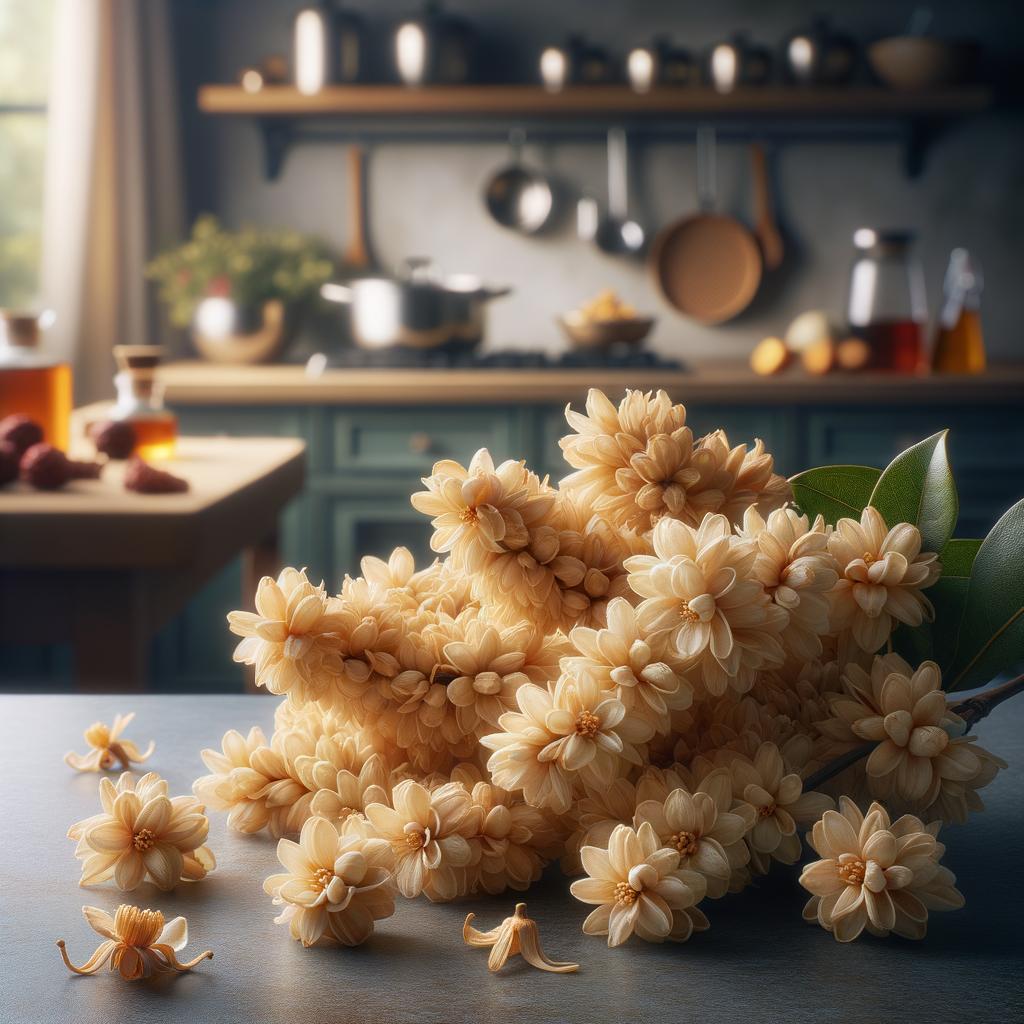Dried Osmanthus Flowers

Description
Dried Osmanthus flowers, also known as Guì Huā, are a delightful ingredient that carry an air of elegance and mystery. These petite, golden-yellow blossoms are renowned for their intoxicatingly sweet and fragrant aroma, reminiscent of apricots and peaches. Their texture, when dried, is slightly crisp, adding a subtle crunch to any dish. The flavor profile of these tiny gems is delicately sweet with hints of fruity undertones, making them an enchanting addition to various culinary creations. Their unique characteristic lies in their ability to infuse a distinct, heavenly aroma into dishes, setting them apart from other floral ingredients.
Primary Uses
In the culinary world, dried Osmanthus flowers are used to create a plethora of dishes, ranging from sweet to savory. They are a key component in many East Asian cuisines, particularly in China, where they are used to flavor teas, wines, desserts, and even certain savory dishes. The flowers are often steeped in hot water to create a fragrant tea or syrup, which is then used as a base for other recipes. In non-culinary uses, they are used in traditional Chinese medicine for their detoxifying properties and are believed to improve complexion and aid digestion.
History
The history of Osmanthus flowers is steeped in romance and intrigue. Originating from East Asia, these flowers have been an integral part of Chinese culture for centuries. They are often associated with the Mid-Autumn Festival, symbolizing family reunion and happiness. In ancient times, Chinese poets and artists would use Osmanthus flowers as metaphors for noble and strong individuals who maintained their integrity even in adverse situations. Over time, the use of these flowers has evolved, but their romantic symbolism and their role in traditional festivities remain unchanged.
Nutritional Information
Nutritionally, dried Osmanthus flowers are a treasure trove of benefits. They are rich in essential oils and flavonoids, which have anti-inflammatory and antioxidant properties. They also contain a good amount of calcium and iron. Regular consumption of Osmanthus tea is believed to help improve skin health, aid digestion, and boost the immune system. However, like all ingredients, they should be consumed in moderation as excessive consumption can lead to allergic reactions in some individuals. Compared to other floral ingredients like lavender or chamomile, Osmanthus flowers have a higher mineral content, making them a nutritionally superior choice.
In the realm of food history, dried Osmanthus flowers are truly a poetic ingredient, combining beauty, fragrance, flavor, and health in one delightful package.

